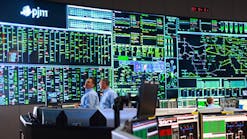Utilities Must Reinvent Themselves to Harness the AI-Driven Data Center Boom
Overwhelming demand from data centers has US utilities grappling with an unanticipated challenge: After years of flat or shrinking demand, many have forgotten how to grow. Efficiency and operational nimbleness were paramount while US electricity demand plateaued over the past two decades, but that era is over. Generative AI and the data center boom blindsided utilities just as demand was also rising because of repatriated manufacturing, industrial policy, and vehicle electrification.
Now, US utilities are bracing for demand to outstrip supply within a few years, with data centers accounting for the bulk of the increase (see Figures 1 and 2). By 2028, utilities would need to increase annual energy generation by 7% to 26% beyond 2023 levels to meet projected demand—far exceeding growth rates of the past two decades.
US utilities will be disproportionately affected due to the concentration of data center investment, but the challenge is global. Data centers’ annual worldwide energy consumption could more than double from 2023 to 2027, potentially requiring more than $2 trillion in new energy generation resources, according to our estimates. In the US, funding the capital investments to serve data center growth over the next decade would require utilities to generate 10% to 19% in additional revenue each year than previously forecast (see Figure 3). That could incrementally increase customer bills by 1% annually through 2032, our analysis found.
The opportunity cost and risks of massive investments in data center projects may outweigh the benefits for some utilities. Yet, missing out on the growth opportunity is also a big risk. Those that pursue it face a high-wire act—moving quickly and boldly while ensuring reliability, affordability, and sustainability. If they move too slowly, data centers will look elsewhere or invest in behind-the-meter solutions such as on-site renewable energy.
To meet this challenge, utilities must revamp their business models. Data center customers have substantial financial resources and are willing to collaborate to find creative solutions such as innovative rate structures, long-term contracts, and joint ventures. Utilities must also modernize their operating model to accelerate resource planning and infrastructure development, balancing the pressure to move quickly in a heavily regulated industry.
Leading utilities are concentrating on five critical steps:
- Rationalizing the customer pipeline. Emerging leaders prioritize serious buyers and assess project readiness, committing only to customers with firm plans in order to avoid underutilized capital investments. (For instance, have they scoped out land and developed a schematic for the new facility? Will they commit to minimum demand charges and long-term contracts?)
- Developing a feasible resource plan. Leading utilities rapidly model multiple resource scenarios that meet the needs of customers, regulators, and the utility, focusing on execution over the next 2 to 5 years in addition to the historical 5- to 20-year view. One utility conducted rigorous diligence discussions with each prospective data center customer, including assessing willingness to participate in demand response programs and fund up-front capital. The utility’s modeling revealed that over the next 10 years, some scenarios would require building more than twice the capacity the utility had added over the previous two decades. This assessment helped the utility determine the load demand it could serve and inform the capital investments required to meet data centers' rapid timelines.
- Getting creative on pricing and financing. Some utilities are developing new rate designs that ensure data centers bear the full incremental costs of their energy usage. Long-term contracts with minimum charges protect other customer groups and ensure the utility can recoup its investment. While such practices aren’t entirely new, the scale of the required investments has led to stricter contractual terms. Utilities are also exploring models in which large customers help directly fund clean energy projects and grid infrastructure improvements.
- Innovating for speed and efficiency. Delivering on data center customers’ rapid timelines requires utilities to work differently. Accelerating decision making, engaging stakeholders earlier in the process, and leveraging Agile approaches and newer technologies will be imperative. Commercial teams may need to revamp their processes and upskill employees to manage more complex negotiations with sophisticated data center operators. One utility created a small program management team to coordinate data center business activities across functions and develop creative ideas for overhauling its traditional practices to better serve these customers.
- Working more closely with industry partners. It may feel uncomfortable, but effective utilities will leverage industry partners’ expertise and resources. Working with developers that can bring projects online faster and at lower cost would allow utilities to meet ambitious timelines without overstretching their own capabilities.
The most successful utilities will establish a long-term strategy that strikes the right balance between pursuing the data center opportunity and maintaining a reliable, safe, affordable, and sustainable energy grid. They also won’t fear reimagining what a utility company could be. Asset managers? Technology companies? These might sound extreme, but the emerging leaders are looking toward the future with a willingness to challenge paradigms and transform to seize opportunities.
The authors wish to thank Paul Bockwoldt for his contributions to this article.





